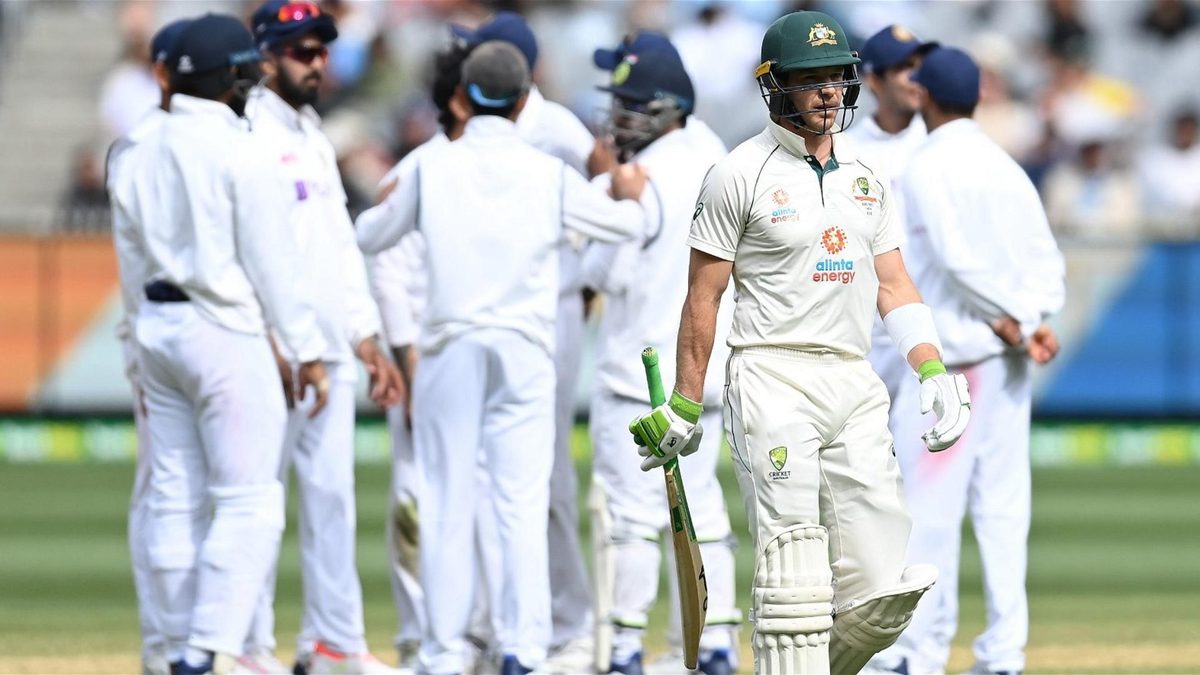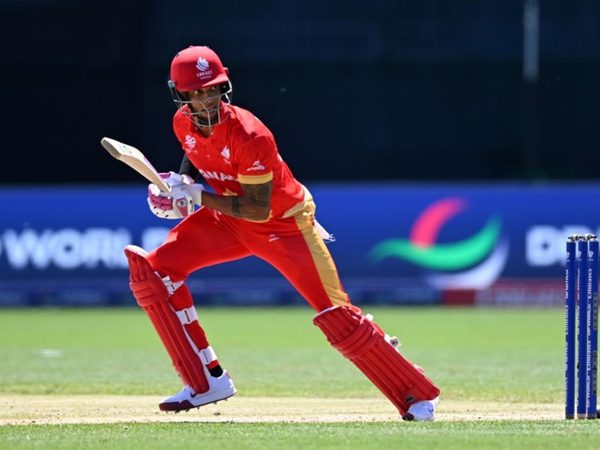
Australia captain Tim Paine was given out in controversial circumstances in the third innings of the second Test against India, with a not-out caught-behind decision overturned by a DRS review, despite conflicting evidence from the technology.
The incident occurred in the 48th over of the innings, with Ravindra Jadeja bowling to the No.7 batsman. A length ball from the left-arm spinner turned and bounced past Paine’s outside edge on its way to Rishabh Pant’s gloves, and after a loud appeal, stand-in captain Ajinkya Rahane chose to review the decision.
In this series, both Hot Spot and Real Time Snicko are in use, with the former using thermal imagery to see if contact has been made with the ball, and the latter lining up the slow-motion footage with the audio from stump mic to see if a sound has been captured.
In this case, Hot Spot didn’t show any contact between bat and ball, but a noise was recorded around the moment the ball passed the bat, and the TV umpire saw fit to overturn the on-field decision.
However, Paine seemed dissatisfied with the decision, and the Fox Sport commentators debated whether the noise recorded might have been from Paine’s spikes scraping along the ground rather than bat hitting ball.
“Just look at his front foot as the ball is coming now, look at that front foot slide across the turf,” said Shane Warne. “I just wonder if they are marrying up the sound there if it’s the foot sliding. I’ve got a feeling that front foot is just scraping across the turf.”
“I think Tim Paine has got every right to be annoyed,” said Brett Lee. “That’s not right, in my opinion.”
Speaking on 7Cricket, former ICC umpire of the year Simon Taufel explained how, even when there is seemingly conflicting evidence the third umpire can still reach a conclusive decision. “There’s a number of things that the third umpire is working on here in his conclusive evidence protocols,” he said. “The first thing is, is there a deviation? That’s normally the first thing that they look for. The second thing is, if there is no deviation apparent, then the redundancy in the protocol looks at the Hot Spot.
Simon Taufel goes through the umpires' steps when using their "conclusive evidence protocols", and why one frame *past* the bat matters #AUSvIND pic.twitter.com/ROpuzNSFc6
— 7Cricket (@7Cricket) December 28, 2020
“And if there’s no Hot Spot that they can determine is conclusive, then the further protocol is going to RTS (Real-Time Snicko). And if the ball is close to the bat while there is a spike as the ball goes past to bat, or up to one frame past the bat, then that is deemed to be conclusive evidence that the ball has hit the bat. So there is a redundancy in the protocol that the third umpire has at his disposal.”
Whatever the reality of the situation, a marginal DRS call going against Paine in some ways evened out a controversial call in the first innings, when the gloveman was reprieved on an umpire review for a tight run-out call.








